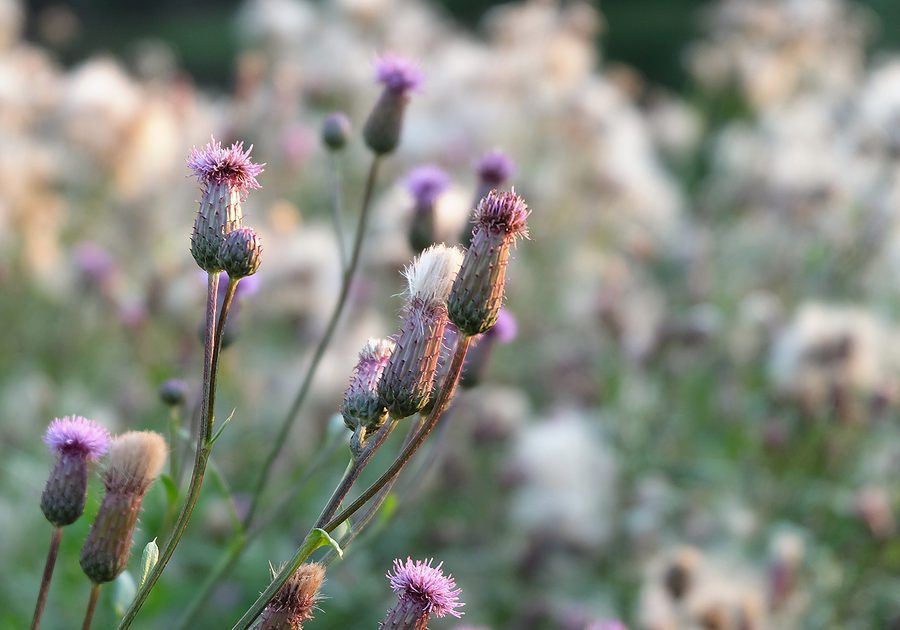What’s the Best Way to Maintain a Weed-Free Yard in the Summer?

Weeds on your lawn are like acne on your face: entirely natural, but something that we would all prefer did not happen. The 99% of plants on this planet that everyone insists are weeds.
These weeds are not bad, and they do not do bad things, but they do compete and invade places where, you don’t really want to see them in there. When you have a green lawn, and some yellow heads pop up, they’re considered to be an eyesore.
Where it starts to become a little dicey beyond aesthetics, it’s always a competition for sunlight and nutrients and water.
Let the weeds grow and proliferate, however, and they will eventually take over the lawn — weeds are more versatile than grass in nature. But there are a number of ways to strike back!
1. Have A Regular Mowing Schedule
Like all organic species, grass has a reactionary quality, and adapts to its environment, so a well-cut lawn is a healthy lawn.
Your lawn thrives on a regular, predictable/scheduled mowing routine because it doesn’t have to panic about being robbed of too much height at any one time, and it can continue to grow and flourish, knowing it’s going to be looked after.
Regular mowing of your lawn is to say something about 10-14 days after mowingh when is over the fast growth weeks of the spring.
When you cut blades of grass more than 1/3 of their length, they go into shock because it is such a huge change to their biology. They stop thinking of “growing” and start thinking of “preserving energy” and surviving.
When you mow frequently you’re telling your lawn that this is just a maintenance trim, not a total makeover. Your lawn spronges up and directs its attention to thriving lushly green.
2. Prioritize Having A Healthy Lawn
If you want the weeds gone and gone for good, you don’t spray liters upon end of herbicide on it, you step back and fix the cause, not just the effect.
A beautiful lawn comes from the balance of hydration, decompaction, nutrients and sunlight. You can accomplish these, by:
Water Your Lawn Regularly:
Depending on what season you’re in, your lawn can get mighty thirsty and the rain comes and goes as if it had no pattern. Allowing mother nature to take its course just is not enough because, remember, if you did nothing, you’d have a lawn of many weeds and wild grasses, not your golf green turf.
Cool climate areas often have type Kentucky Bluegrass or Rye grass. Your lawn needs are best if you plan for at least 3 times / week with a good rule of thumb of 1 inch of water to be delivered to the soil. You can do this by placing a frisbee upside down under your sprinkler and waiting until it fills up, before moving your sprinkler to the next section.
Two “binge” watering sessions during the week instead of light watering every day works better for your lawn because it encourages deep roots.
3. Aerate Lawn Two Times A Year
Aerating your grass is one of the greatest things you can do for your lawn. One lawn care secret that golf courses won’t tell you is that they are aerating their lawn 4+ times per season.
Each time you aerate, you break apart the top layer of your ground, you mix hole pockets for water and nutrients to drench into, and you’re opening up your turf’s roots to moisture in the air.
This means that your lawn gets an enormous advantage from all this added water, sun, seeds and nutrients.
4. Seed Your Lawn in The Spring and Fall:
Grass, just like any living organism, is also perpetually aging and will eventually die. Every year, you should add more new, good-quality grass seed. In that fashion, new seed will germinate, mixed within your established grass. This will ensure you always have nice young grass on your yard, and fresh grass will always grow irrespective of the annual “thatch” that run-of-the-mill lawns naturally produce.
Weeds are all about competing for more sun and more water. Not only does thick grass not give weeds much chance to get established, they start starving to death because they simply cannot keep up with grass that has reached a healthy, thick, full plate.
5. Keep Moderate Fertilizing Routine
Long term, the plan is to get your lawn’s health completely in check so you won’t need weed control in the future. But when you start there’s going to be some nasty weeds that need to just die to allow your grass to succeed.
For this, use a “selective” herbicide meaning the weed control will kill the unwanted common weed, but will not kill your grass. These types of products are available in concentrated, and diluted forms.
2, 4-D is the active ingredient that does the work in these. A homeowner can expect to use about two to three 4L turnover jugs of diluted product per season when first starting out. They tend to run for around $40 CAD from your local hardware store. Further down the line, if your grass is healthy and vigorous, you’re not going more than a 4L jug a season.
Weeds are nutrient thieves for lawns. The more you ignore the weeds in your lawn, the more fertilizer, and water, you must apply to make sure that your grass gets it, and not only the weed.
Overspray can lead to burning, and keeping pets and children off the lawn where the product has dried (usually in twelve hours) is crucial. Weed control is foliar application so you need to spray it on the leaf and not the root of the weed because that it where it is absorbed.
6. Get Your Neighbors Involved in the Fight
The truth is, it does not matter how much time, sunscreen, and dollars to spend to keep your lawn in shape, if your neighbor’s lawn is filled with weeds, the wind will inevitably blow them onto your property. Any new weeds seeding, while running amok on your property, need to be addressed.
Increased property value and reputation of a neighborhood as having responsible homeowners who keep their property up. You can also benefit from this as well! A lawn services company might tell you if there some neighbor discounts that apply when 2 or 3 or 4 of your neighbors all book at the same time, make sure to ask.
If you still want to try and do it yourself, you can rent an “aerator” for the day from your local improvement store for around $80-120. Let everybody pool their money together and rotate the aerating of your lawn with the machine. Keep in mind that an aerator weighs approximately 300 lbs.
Weeds are 100 percent natural, but they 100 percent suck. You don’t need a PhD in horticulture to enjoy having a beautiful lawn all summer, but you do need to know there are concrete steps one can take to win the battle against the weeds.
Always remember that it’s continuous struggle. There is not a lawn that will be weed free without some effort from the homeowner. The more work you do over the years providing your turf with everything it needs to flourish, the easier and easier it will be to enjoy a lush green, thick, weed free turf.
A beautiful lawn is the cherry on top of your home. It makes you feel proud and lets the neighborhood know you’ve got your ducks in a row.
